Types of moisture barriers
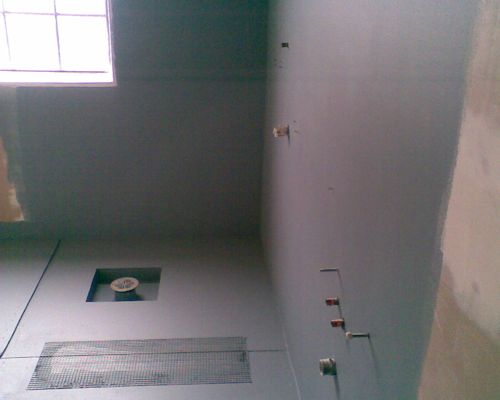 Audio for slide 1 (mp3 |6|KB)
Audio for slide 1 (mp3 |6|KB)
Strictly speaking, however, the only true barriers that completely stop the transmission of moisture are metal (generally aluminium or copper) and glass.
Nonetheless, AS 4858-2004 (Wet area membranes) defines a membrane as 'waterproof' if it achieves a specific performance level under test conditions.
This level is called the 'moisture vapour transmission rate'.

 Audio for slide 2 (mp3 |6|KB)
Audio for slide 2 (mp3 |6|KB)
The types of moisture barriers that meet this definition include:
- Pre-formed sheet membranes that are either laid on top of the subfloor surface or bonded to the surface.
- Fibre reinforced liquid-applied membranes, which either contain chopped strands of fibre in the liquid, or have a separate sheet of mesh that's embedded into the liquid while it's being applied to the floor.
- Liquid-applied membranes that contain no reinforcement.
Pre-formed sheet membranes are commonly found in the modular fibreglass units installed in bathrooms, such as shower trays and other fixtures.

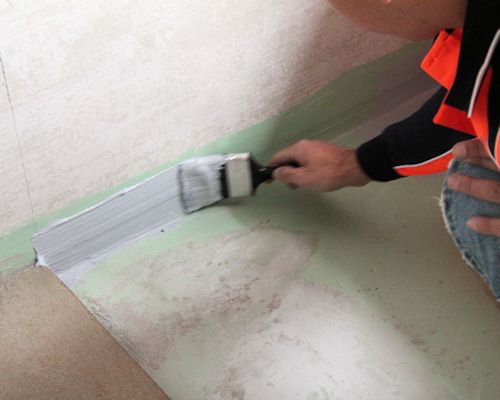 Audio for slide 3 (mp3 |6|KB)
Audio for slide 3 (mp3 |6|KB)
These areas include bathrooms, laundries, commercial kitchens and hospital rooms where water may be splashed around.
They can also be used when there is a moisture problem coming from an external source.
In these cases, their purpose is to resist any moisture that travels through the slab from getting to the surface and affecting the floor coverings or walls.

 Audio for slide 5 (mp3 |6|KB)
Audio for slide 5 (mp3 |6|KB)
Types of liquid-applied membranes
There are three main categories of liquid-applied membranes:
- Acrylic membranes are water-based and can be one or two part. One-part products are premixed, so they are applied direct from the container. Two-part systems normally contain a liquid polymer and a cement-based powder.
- Polyurethane membranes are 'reaction polymers' - that is, the molecules react with other chemicals to form strong cross-linked membranes.
- Epoxy membranes are all two-part systems that contain an epoxy resin and a reactive hardener. Some are designed to be flexible when cured, others are non-flexible.

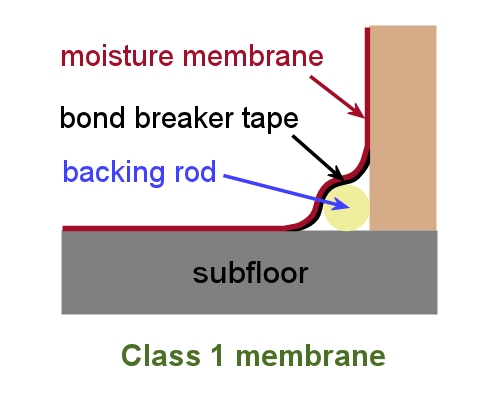 Audio for slide 6 (mp3 |6|KB)
Audio for slide 6 (mp3 |6|KB)
Joints and bond breakers
The flexibility of a membrane is a major factor in its performance and the way it is installed.
AS 4858 defines three classes of moisture membranes, based on their 'extensibility', or ability to stretch when there is movement in a crack or join.
Class 1 membranes have low extensibility, so they don't 'extend' very well when there is movement in a crack or join in the floor, or between the floor and a wall.

 Audio for slide 7 (mp3 |6|KB)
Audio for slide 7 (mp3 |6|KB)
One solution is to put a foam backing rod where the floor and wall meet and cover it with a piece of bond breaker tape.
When the moisture membrane is installed on top, the tape 'breaks the bond' over the joint and allows the membrane to flex and then return to normal.
Note that if you're carrying out a resilient flooring installation, the backing rod should not protrude beyond a 90 degree angle.


Learning activity
Audio 11 (mp3 |6|KB)Choose one liquid-applied moisture membrane and answer the questions below.
- What is the brand name of the product?
- Who is the manufacturer?
- What membrane class does it belong to?
- What is its chemical base (e.g. acrylic, polyurethane, epoxy resin)?
- When should the product be used? (Give some examples of the types of applications specified by the manufacturer for this product.)
If you're not familiar with any particular brands, follow the links below to two manufacturers' websites and choose one of their products.
Alternatively, you could select a product being stored on the shelf at your workplace, or simply go to your local hardware store.

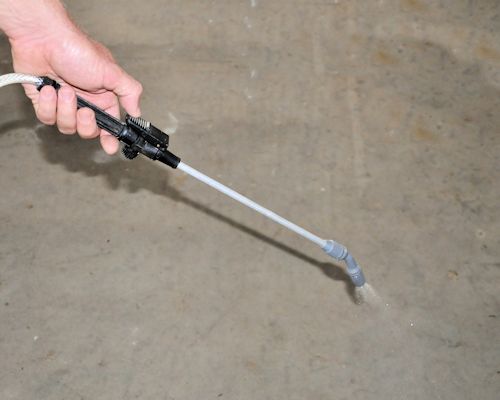
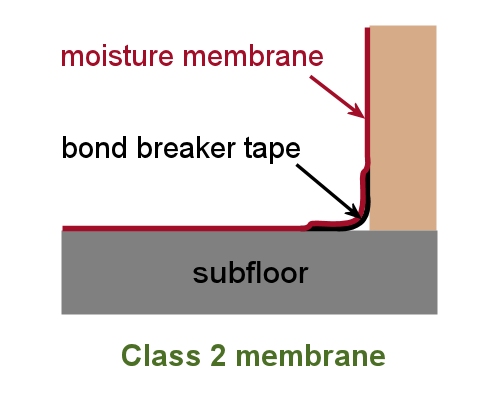
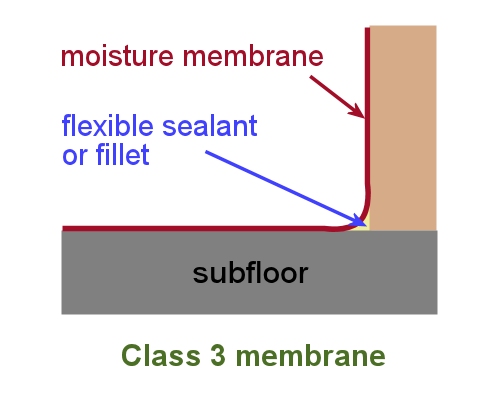
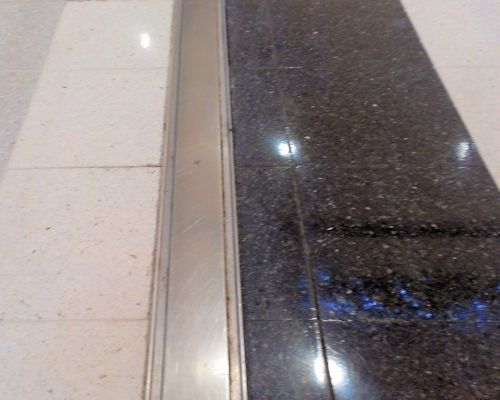
 Go to
Go to